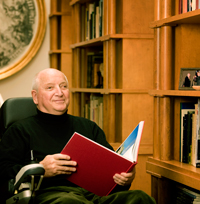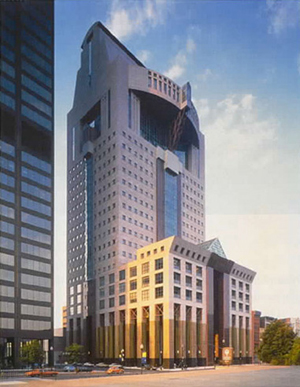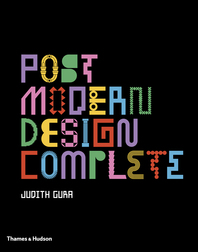The architect discusses winning this year's Driehaus Prize, which honors classical architecture and traditional urbanism, and how he plans to spend the $200k award.
 |
| 2012 Driehaus Prize winner Michael Graves |
| Photo courtesy University of Notre Dame School of Architecture |
Michael Graves is better known for appropriating traditional forms in his monumental Postmodern compositions than for being a strict classicist, so it may seem surprising that in December he was named the winner of the 2012 Driehaus Prize, which celebrates architects who advance classicism in their work. Graves, the founding principal of the New York- and New Jersey-based firm Michael Graves & Associates, joins previous winners Léon Krier, Allan Greenberg, Quinlan Terry, and last year’s recipient Robert A.M. Stern.
Although initially considered a modernist and one of the “New York Five,” Graves’ two years in Italy as a 1960 Rome Prize recipient and the “timeless grammar” of its architecture influenced his evolving style. In his 39 years as a professor at Princeton (now Emeritus), “Graves re-introduced the principles of traditional and classical composition and also brought a dedication to urbanism to a modernist curriculum,” says the award announcement from the University of Notre Dame School of Architecture, which established the $200,000 annual prize in 2003. Graves’ taste for classical forms and geometries is evident in his buildings—including the Portland (Oregon) Public Services Building, with references to capital-topped columns embedded on its façade, and the loggia-fronted Humana Corporation headquarters in Louisville, Kentucky, among many other projects.
RECORD recently caught up with the architect to discuss the award and his relationship with classicism. He also spoke about his most recent projects, including a prototype house for disabled veterans—Graves himself has used a wheelchair since an infection left him partially paralyzed—and an automobile museum in the Netherlands.

The Humana Corporation tower in Louisville, Kentucky
Laura Raskin: Congratulations. Were you surprised to receive an award dedicated to classical architecture?
MG: I never thought I would win it because I’m not a classical architect in the purest sense. But I think classically. I think in terms of an architectural language that is continuous.
What is interesting about winning it is that it opens up the prize to other architects like myself, who aren’t strict classicists.
LR: Do you have anyone in mind?
MG: No, no one person in mind. In a curious way, even Léon Krier isn’t a strict classicist. He’s very inventive with the way he uses his language. And his urbanism is similar to mine. It was encouraging when Léon won. But I even take the award a step further in terms of its broadness—if that’s what they intend to do.
I teach at the University of Miami in the spring occasionally as a visiting critic. There are young faculty members down there doing marvelous work, but nobody knows about it. Magazines don’t publish it because it isn’t Zaha [Hadid] or a museum without anything on the walls yet.
At the Postmodernism conference in New York last fall, when the critics had their time at the roundtable, Robert Campbell discussed the ideas that architects work with: one is urbanism, two is a building’s rightful place, and three is the new. The problem we have is with all of this “new.” There are some things out there that nobody knows about, not just by younger architects, but by architects from the 19th century and 18th century as well. They aren’t just a curious shape—like Rem Koolhaas’s building in China, lying on its side—but the critical debate around them doesn’t exist.
In the days when I was published, I’m sure people felt the same thing about me: “Here’s another Graves building and haven’t we had enough?” Those buildings were new, but they were new-quote-old—and they had something to offer.
LR: What will you do with the $200,000?
MG: I remember when Jim Stirling won the Pritzker [in 1981], somebody asked, “What are you going to do with the money?” He said, “It will help me pay some bills.” Well, we all know that routine. We all have bills to pay. What I want to do, and I’ve already started making drawings, is to extend the library [in my home in Princeton, New Jersey]. My library is full. It’s got books on the floor. Two complete walls in my house are my library stacks. It’s a very pretty room. But I’m out of space. This will give me a chance to increase it. I say that because I hope some day my house will become a foundation and a place for people to study and use the library. It’s not just for me.
LR: You helped design the prototype for the Wounded Warrior home, which was recently completed in Fort Belvoir, Virginia. What’s the latest?
MG: The Wounded Warrior program is essentially for people who have been injured and are re-upping, even with their amputated bodies, or their half-blind bodies, and so on. They are allowed to stay in the army. It is not for people who simply need a place to live.
Our phone has been ringing a lot since people found out that somebody like me is doing health care. That’s so exciting.
LR: What else are you working on these days?
MG: We’re doing a resort community in Switzerland, in Geneva, and a multi-use building on the Nile in Cairo—hotel, office, housing. We’re doing several small elementary and middle schools in New Jersey and New York. That’s a change for us. We’ve never gotten to do those before. And we just finished a really wonderful car museum in the Hague (the Louwman Museum, the national automobile museum of the Netherlands). It’s a very sensitive site next to the Queen’s property.



Post a comment to this article
Report Abusive Comment